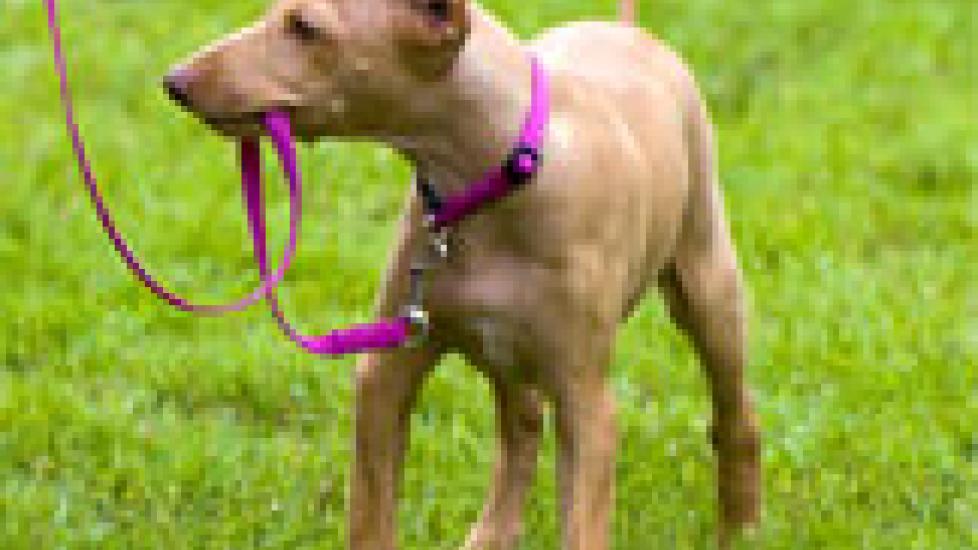When Your Puppy Goes from Friendly to Reactive
Maverick, my 10-month-old Labrador Retriever puppy attends multiple classes a week and also participates in a puppy play group. It is fun for me to watch the puppies develop. There are two puppies, including my own, who are at risk for developing a behavior called leash reactivity.
Leash reactivity is a catch-all phrase for acting out on the leash by barking, lunging, growling and just plain causing a riot. There are lots of reasons why dogs are reactive. Some dogs are fearful, some are excited, some are anxious, and some just love to bark.
You might be surprised to have read that my friendly pup is at risk for this type of behavior pattern. In Maverick’s case, he is pretty sure that all dogs love him and he wants to love them right back! When he sees a dog and cannot get to it, he begins to bark. Barking is actually the way that he expresses himself in many different situations, so why not in this one? It makes perfect sense to him!
If he gets no instruction from me, he escalates the reaction and barks louder with a higher pitch. He is clearly excited, but the excitement turns to arousal. Arousal is a common general term for sympathetic nervous system arousal or neurochemical arousal. Think fight or flight. Yes, Maverick is excited in a friendly way, but the neurotransmitters that are released are still similar, and in some cases identical, to the ones that are released when he is afraid. So, Maverick’s motivation is friendly excitement. How could that be bad?
It can turn bad, as the physiologic reaction of neurochemical arousal becomes associated with the things around it. Those things can include the leash, the other dog, a certain location, or just being on a walk. This is called classical conditioning (think Pavlov’s dog). This means that those things (leash, other dogs, etc.) actually cause those neurotransmitters to be released without any thought from the dog. Isn’t learning theory cool?! Anyway, once this has happened, we have left the training world and are in the world of treating behavior problems. Not good.
The second dog is Sam, a mixed breed dog who is the same age as Maverick. He started out as the dog in class who was most likely to be bullied. Over the course of the class, he adopted the "best defense is a good offense" strategy (this is really common in fearfully aggressive dogs) and began bullying the other dogs. Now, his owner is complaining that he is becoming leash reactive. His motivation is fear and self defense, whereas Maverick’s is excitement, but the end result after a certain length of time is about the same.
So, what to do?
- Recognize quickly that this reaction is not normal and will likely get worse if you ignore it.
- Take action fast to stop the reaction before you are in the midst of treating a long-standing behavior problem.
- Begin immediately by intervening early in your pup’s reaction with distraction tools and alternate behaviors to teach your pup to focus on you instead of acting out.
- Seek help from a behavior professional immediately. Depending on the severity of your dog’s reaction, you may need a dog trainer, an applied animal behaviorist, or a board certified veterinary behaviorist. You can find information about how to find a good dog trainer here: Ten Easy Steps to Finding a Great Dog Trainer. You can find a veterinary behaviorist by going to this website: ACVB.org And you can get help finding an applied animal behaviorist at the Animal Behavior Society.
- Read some of the techniques that I used with Maverick in my previous blog, Dogs Will Bark at You.

Dr. Lisa Radosta
Image: Nikolai Pozdeev / via Shutterstock
